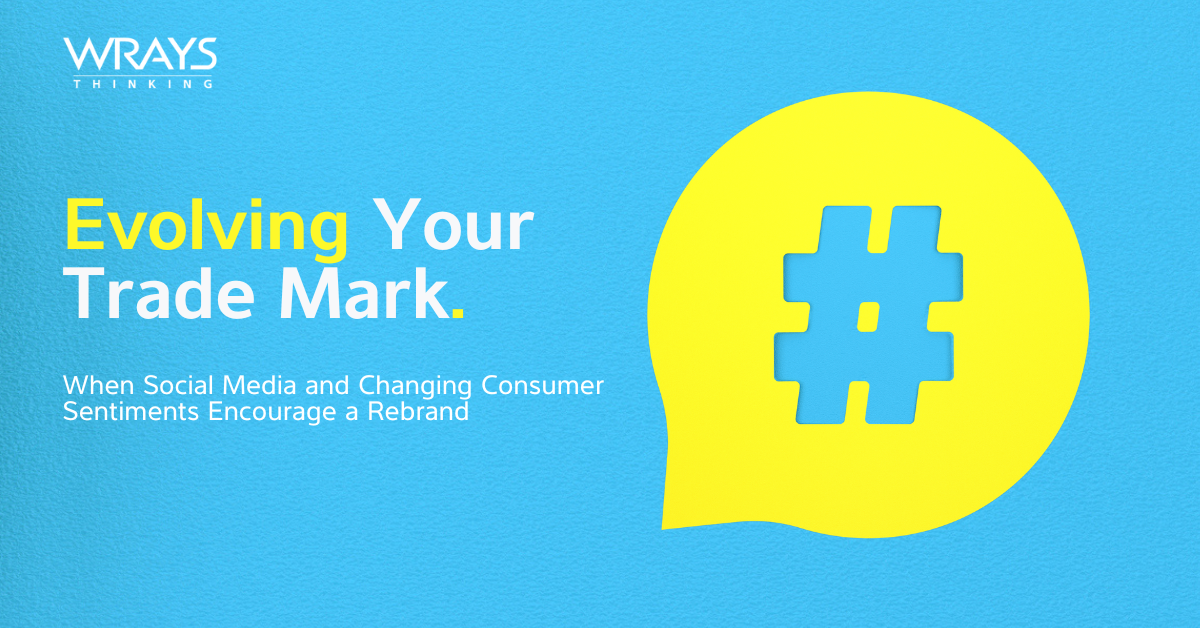When Social Media and Changing Consumer Sentiments Encourage a Rebrand
For companies trying to find a new trade mark, life has definitely become more complicated. Not only are there more marks on the Register but there are more factors to consider. Before the Internet, manual searches had to be done of the Trade Marks Register, company and business name registers and the telephone directories. These searches took time and often couldn’t be fully completed before a company launched a new brand. There were a lot of “fingers crossed” moments back in the 20th century!
The Internet meant that searches could be done more quickly but companies also had to consider whether or not they could get a domain name that incorporated their trade mark. Cybersquatting and typosquatting became common words and businesses quite often had to choose between paying a small fortune for buying a domain name, lodging a formal complaint or finding an alternative. Then came social media and Facebook names and Instagram and Twitter handles.
And with consumer sentiments evolving, and capable of changing in an instant through social media, it seems that now more than ever, businesses also have to consider how their mark will be perceived by consumers in general and interest groups in particular.
In 2021, after 90 years of use, a Washington football team rebranded to change its name from the Washington Redskins to the Washington Commanders. A combination of social protests over systemic racism and the threatened withdrawal of some key sponsors unless the name was changed, led the team to announce that it would look for a new name. Public sentiment was so high, that the team used an interim name, Washington Football Team, until it could settle on a new one. Interestingly, 2020 also saw Nestlè, rename its Allens’ Redskins lolly to Red Ripper.
The past two decades have seen a growing awareness of cultural (mis)appropriation and an increased need to protect Indigenous words and symbols. In New Zealand, all trade mark applications are examined to see if they contain Māori elements or features derived from mātauranga Māori, that is Māori knowledge. If it looks like the mark contains a Māori element, then it will go to the Māori Trade Marks Advisory Committee for an assessment to see whether it would be offensive to Māori if registered.
In Australia, trade mark applicants are asked to consider whether or not a potential trade mark could be offensive to Aboriginal and Torres Strait Islander people. In recent years, the court of public opinion has weighed in with the consequence that applications have been withdrawn.
In June 2019, an Australian trade mark application was filed for TIDDA for a variety of types of bags. The English translation of the Northern Koori Aboriginal word TIDDA is sister. A petition was started and more than 13,000 signatures were obtained. The applicant gave a heartfelt apology. Her intention was to use the mark to raise funds for and promote a mentoring program and educational scholarship for Indigenous girls. Nevertheless, public sentiment dictated that the application be withdrawn.
Heading back to the northern hemisphere and a little more recently, similar issues arose in the UK. Fizzy Foam Ltd (Fizzy Foam) is a Welsh company that makes candles sold under the Handmade Welsh Candle mark. Fizzy Foam successfully applied to register as trade marks a number of Welsh related phrases including CARIAD and HIRAETH. Cariad means love. Hiraeth has no direct English translation but, on one view, refers to a blend of homesickness, nostalgia and longing. Other candlemakers were annoyed on the basis that such terms are Welsh and should be available to anyone to use and in fact were being used by other traders. Feeling the social media backlash, Fizzy Foam withdrew its applications.
And closer to home, a West Australian brewery recently announced its rebrand from Colonial Brewing to CBCo Brewing following backlash over its name, with a suite of new trade mark applications for its refreshed brand now pending.
These are just a few of the instances where businesses have been forced to change their marks because of consumer sentiment and backlash. There is no doubt that how the public might perceive a mark is more important than ever.

